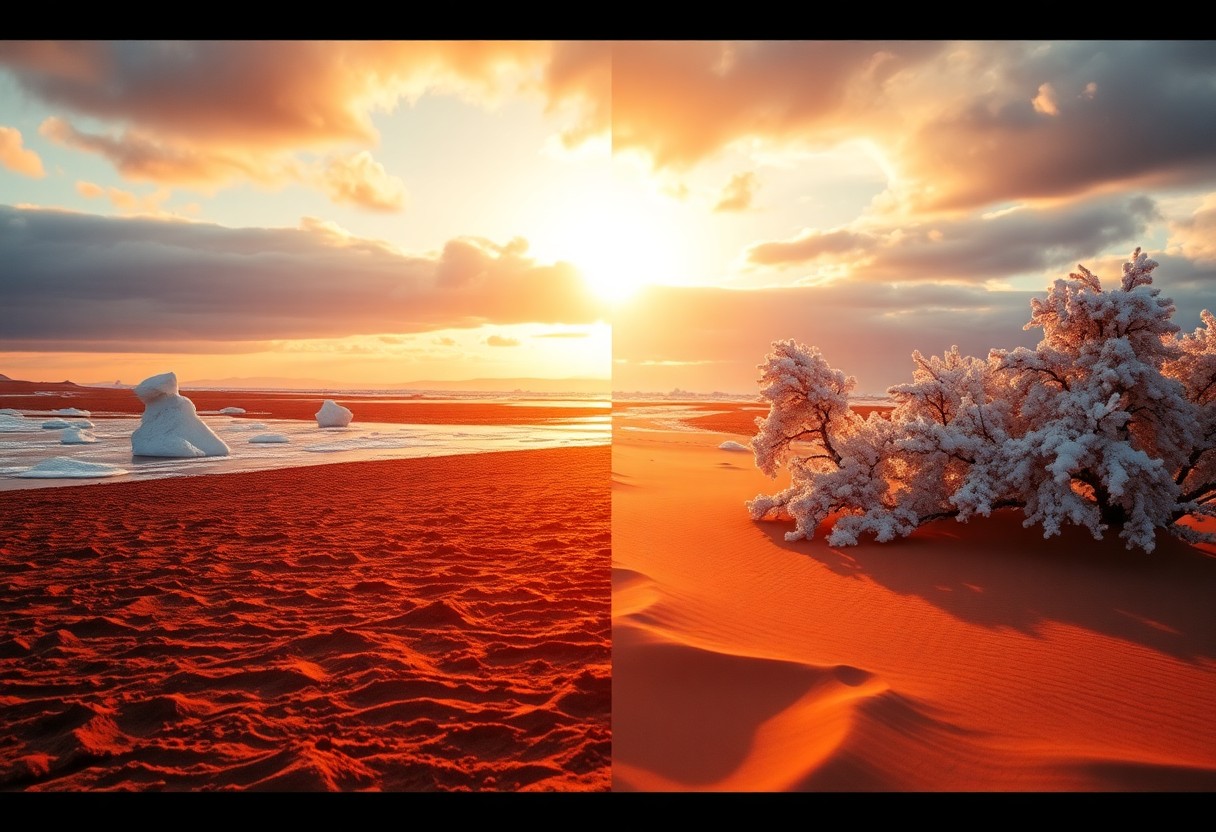Cold air fills your lungs as you step outside in the middle of a fierce winter storm. However, have you ever wondered where the coldest places on Earth are right now? This article dives into both extremes—those shivering temperatures of the coldest locations and the sweltering heat of the hottest places on the planet today. Each of these environments presents challenges and wonders that might spark your curiosity.
When you think of cold, the first place that often comes to mind is Antarctica. Currently, the coldest recorded temperature is around -128.6°F (-89.2°C), measured at the Soviet Union’s Vostok Station back in 1983. While this record still stands, the Antarctic Plateau continues to have some of the lowest temperatures on Earth. Here, you can experience conditions where temperatures can plummet below -70°F (-56°C) several times during the winter months. If you ever visit, skiing, ice skating, or simply appreciating the snowy expanse might provide you with unforgettable memories.
Another notable contender for cold places is the interior parts of Greenland. The average temperature in these regions during winter can hover around -20°F (-29°C) or even lower. Areas like the Greenland Ice Sheet are not only breathtaking in their stark beauty, but they also showcase how life adapts to such extreme conditions, with resilient flora and fauna managing to survive sparsely.
On the other side of the spectrum, the hottest temperatures can be just as extreme. Currently, many eyes are on Death Valley, California, where temperatures frequently soar to over 120°F (49°C) during summer months. In fact, it holds the record for the highest air temperature ever recorded on Earth at 134°F (56.7°C) in 1913. Wandering through the sun-drenched landscape of Death Valley, you’ll quickly understand just how limiting these temperatures can be. Hikers and explorers should always prepare adequately for such intense heat by staying hydrated and wearing protective clothing.
Another spot that prides itself on blistering temperatures is the Lut Desert in Iran. Satellite data recorded surface temperatures reaching as high as 159°F (70°C). When you’re there, the heat feels like a suffocating blanket, presenting an impressive yet unnerving experience contrasted by the vast, stark beauty of the desert.
As you consider these extremes of temperature, it’s fascinating to see how different life forms adapt to their respective environments. From the hardy microorganisms that thrive in the Antarctic ice to the resilient flora in the middle of a desert, the earth showcases an incredible variety of life that can withstand extreme conditions. Whether cold or hot, both ends of the spectrum serve as powerful reminders of our planet’s diversity.
When all is said and done, both the hottest and coldest places present unique challenges, beauty, and a reminder of our planet’s wonders. Keep these extremes in mind as you explore and appreciate the world around you, and perhaps dream of planning your next adventure to one of these remarkable locations.







